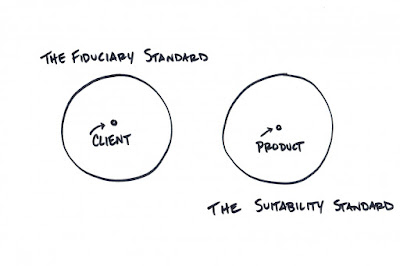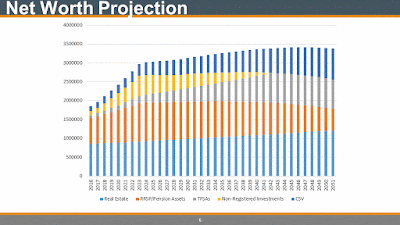"What's Going On?"
Market Price Fluctuations
When an investment portfolio is rising in value, I am not usually asked the "what's going on?" question. When the investment portfolio shows a decline in value (which may happen from day to day, week to week or month to month), I field significantly more of that question.
As I have often said in this blog, on our weekly webinar or in face to face conversations: in order to get better returns than the risk-free rate of return (i.e. where you are taking no risk with your investment), which would be a 90 day Government of Canada T-bill yielding about 1/2%, you have to take risk.
In order to grow your money at a rate better than the inflation which erodes your purchasing power in the future (currently about 2%, depending on where you live and what you consume), you have to take risk.
Risk can be mitigated, which is what Paul and I do for ourselves and our clients on a 24/7 schedule. Risk does not sleep.
However, part of taking risk (and depending on how that risk-taking is structured) means that not every investment that you may own goes straight up. There are no guarantees that it will even appreciate in value, but we work very hard to find investments that are likely to go up or at the least, pay us dividend or interest income while we wait for them to go up (remember, Paul and I invest in the exact same assets as our clients and we want our money growing too).
Prices for each and every asset that we own will fluctuate on a daily basis. At the end of the day, an independent third party determines where to mark the prices based on the final buying and selling transactions of that given day. At the very least, in less liquid securities, what the buyers were willing to pay (we call that the "bid" price).
What drives those prices is a myriad of factors: micro-economic (value), macro economic, technical, emotional, cash flow, algorythmic (computer generated) trading, geo-political, weather and so on. When something motivates a buyer, they are willing to pay the motivated seller and in all likelihood they are motivated for opposing reasons and points of view.
When there are more motivated buyers of a specific security than there are sellers, prices will rise. And, you guessed it, when the opposite happens, prices fall.
This goes on and on all day, every trading day, through the weeks, months and years.
Each security is re-priced each day based on the buying and selling, which we have no control over.
What we do have control over is the research required that determines the risk factors associated with each security that we purchase. That means we assess the risk and make our decision to buy and or when to sell.
Depending on the security, it may be a long-term decision or a shorter-term decision where we believe there is value (relative to the risk) in owning it at the moment, but once it reaches a certain point where value is neutral or expensive, we sell it.
As I said earlier, we have expectations of where the price will go, but it may not take a straight line getting their. Sometimes, other investors / traders will be more motivated sellers that pushes the price (temporarily, we believe) lower and at the end of any given day that price will be marked at that lower level.
That does not mean that the price will remain there the next day, week or month, it will depend on whether, on any given day or over any given time period the buyers or sellers are more motivated.
It is also why we believe in broad diversification: the more securities you have that are not necessarily correlated to each other, the less likelihood of large price fluctuations in the price of individual securities impacting the total portfolio.
Last week, as the central banks all announced (in a concerted manner) that perhaps the time for super easy monetary policy was drawing to a close, 10 year Government of Canada bonds (which we own) were sold off quite significantly (more motivated sellers than buyers). The prices were marked lower for these bonds and most other bonds that trade in a correlated nature. In a nutshell, bond prices across a broad spectrum were priced lower. It certainly had a negative impact on an overall balanced portfolio (if your portfolio is 40% bonds / fixed income, it had less impact than a portfolio that is 60% bonds / fixed income and so on).
Remember also, that bonds mature at their par value (as long as the bond issuer remains able to pay, but with quality bonds that is a lighter issue), in the interim their prices will fluctuate with inflation and interest rate expectations. However, their prices are marked on a daily basis. The lower prices on the day make their daily value lower, but until you actually sell them, their is no loss. If you bought them at their issue price ($100 per bond), they will mature at that price (regardless of daily pricing) and you will receive semi-annual interest payments until that time.
A motivated seller of those same bonds, on any given day, perceives that they might be able to buy them again at a lower price, or perhaps buy something else that they believe to have better value (whatever the motivating factor might have been).
Regardless of who is doing what, day to day, week to week, month to month price fluctuations and portfolio value fluctuations will occur.
What is crucial is that over time (multiple year periods) that a portfolio grow to offer returns that keep us well ahead of inflation for our purchasing power when we need to utilize that money. That is what we refer to as the stewardship of wealth.
It is a long-term proposition. All else is gambling.
Getting an appropriate long-term return, relative to the amount of risk we are taking is our goal. Short-term price fluctuations will occur, but over time a well-managed (risk-adjusted) portfolio will prosper. We manage risk first.

























